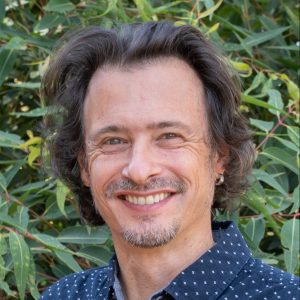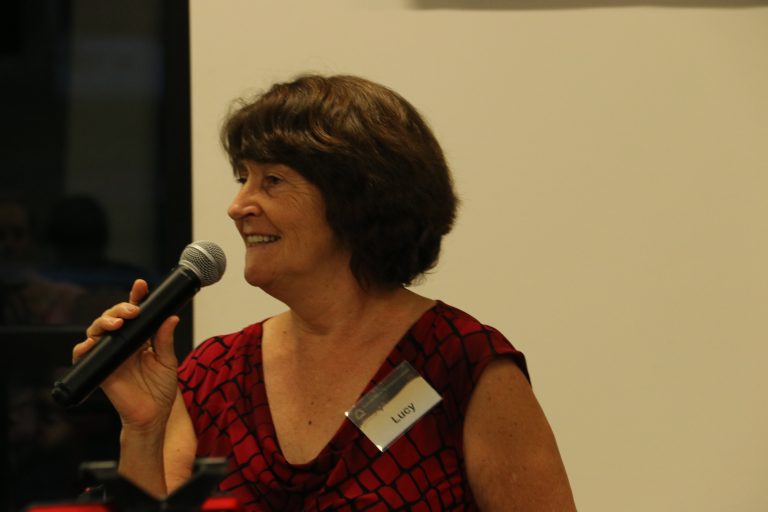Creatively telling God’s story

Image by Gary McMaster
By Deb Fox | Wycliffe Today Winter 2023 |
Ethnoarts or ‘ethnic arts’ enable language communities to tell stories using artforms from their culture, whether that be symbols, images, music, drama or dance. Lucy Rogers, along with her husband Alan, has been leading songwriting workshops with Indigenous communities since the late 1980s to help them connect with and share God’s story of love and redemption.
Lucy explains:
Communication is more than just language – the arts carry so much more meaning! Song and dance are very strong media for sharing the gospel in Indigenous culture. God made each one of us and put us where we are for a reason. Just because you become a believer, it doesn’t mean you have to throw your culture away. Our role is to help communities determine ‘What is of God and what is not of God? What is good that you can use from your own art forms to tell his story?’
At a Katherine Christian Convention a few years ago, women from the Warlpiri language in the Tanami Desert, northwest of Alice Springs, shared a dance that they had created. Lucy says:
The [Warlpiri] ladies felt it was important to create a dance to tell the gospel to their older people. They decided to do the Parable of the Ten Virgins [Matthew 25:1-13] but one of the older ladies – who was not a Christian at the time – wanted to create a dance that explained why Jesus was on the cross. In the process of talking about what repentance means and what it looks like to follow Jesus, the lady who suggested it came to the Lord herself! The dance (which was made in four parts) told the story of feeling sorry for sinning, kneeling before the Lord in repentance, giving their life back to the Lord and dancing away joyfully.

Like Lucy, Peter is a Wycliffe member with a passion for helping cultures use art to understand God better. Through the ‘Arts for a Better Future’ program in Dallas, Peter trains cross-cultural workers with the tools they need for working in language communities to research what artforms are suitable for storytelling. Peter also has experience leading ethnoarts workshops in Papua New Guinea, Kenya, the Solomon Islands and Australian Indigenous communities.
Peter recalls a painting workshop north of Alice Springs where 8 Indigenous ladies were working on large canvases to explain the life of Abraham. When they had completed their artworks, passages from Genesis that related to each painting were read out in each person’s language. Peter says:
It’s exciting seeing people start to understand the Scriptures, having encountered God’s Word through an artform like painting. The arts speak innately to their hearts. Seeing artists come to the Lord through encountering the Scriptures in their cultural creative language…there’s really nothing like it.
PRAY:
for more people to help with audio recording and editing that God would provide for the needs of 3 communities waiting for recording of their songs to begin for an ethnoarts workshop Lucy and teachers from Nungalinya College are planning for 2024 for a painting workshop fellow ethnoarts trainer and Wycliffe member, Ming Fang Strickland, is facilitating that God would continue making Scripture come to life through ethnoarts storytelling.
MORE:
Watch stories of Australian Indigenous people sharing their faith at https://www.40stories.org.au/
Preserving culture through ethnoarts
Wycliffe Today | Spring 2021

By Deb Fox
Alan and Lucy Rogers are Wycliffe members and have been serving with AuSIL in Northern Australia since 1986. They initially helped with translation among the Garrwa people then moved into audio and media Scripture engagement across many language groups. For the last three years, Alan has been the interim Director of Australian Society for Indigenous Languages (AuSIL) but passed on his responsibilities to Phillip Townsend this year.
Lucy has years of experience in ‘ethnoarts’: ethnic arts that are empowering local language communities to create visual art, music, dance and drama representations of Scripture in a culturally-relevant way.
Lucy says that there are positive signs of ethnoarts being recognised as a valuable way of engaging in local culture:
There has been a growing interest in ethnoarts in both the secular and Christian worlds. We have found that when Indigenous Australians engage in local art forms within their communities, it speaks to others in their language group who might not otherwise have been interested in hearing about God. Among Indigenous Australians, there is a huge swing towards the use of arts. This has a huge effect on the maintenance of language and culture, allowing for freedom in expression but also for passing on information in a way that is culturally relevant.
Lucy explains how early government and missionary efforts among Aboriginal and Torres Strait communities often viewed non-Western cultural practices as ‘evil’:
This has had a detrimental effect on how many Indigenous Christians perceive their culture. Just because a person becomes a Christian, it doesn’t mean they have to give up eating with a knife and fork or setting the table a certain way. In the same way, not all Indigenous culture should be discarded.
Ethnoarts enable language groups to discover aspects of their culture they can bring to God and use for his glory. As Lucy explains:
We need to encourage Indigenous churches to engage in dialogue as they seek direction from God about what is permissible within their culture. Language groups such as the Warlpiri have adapted their iconographs to tell Bible stories. In Arnhem Land, there is a group of ladies exploring ways of using some of their dance forms for God—they feel this is from God but are waiting on their elders to approve this use. Yet other language groups have not done this and may frown upon it.
Unfortunately, language usage has changed a great deal since Alan and Lucy first moved to the north of Australia. Many young people no longer speak the language of their parents and grandparents. However, Lucy says that the production of audio Scripture and music in Garrwa and other Indigenous languages is helping to revive language, particularly in church settings. Lucy says that the songwriters workshops she facilitates are always a highlight:
We have been involved in many songwriting workshops since 1987. Some are held in our AuSIL centre, others in the community. It is lovely to encourage folk to seek God by writing songs, to base their songs on God’s Word and to see people working together to worship God in their preferred musical style. It is a real joy and privilege to be involved in the whole process, from recording many of the completed songs, to later hearing these songs shared across communities.
Now that she and Alan have more time to spend in community, Lucy plans to sit with people and learn more about their arts and the spiritual undertones:
I want to encourage and pray for believers as they seek God’s direction for their arts. I also want to document the development of Christian Indigenous dance and variations within language groups.
Looking back on the past 35 years, Lucy says she loves the space, freedom and remoteness of being in community:
The motto here is ‘go with the flow’. You cannot rush anything. Relationships are more important than time-oriented goals. It took time to develop but it is very special to be part of our Garrwa family and clan system and really feel like we belong.




 Thanks for your patience...
Thanks for your patience...